INDIAN ARMED FORCES CHIEFS ON
OUR RELENTLESS AND FOCUSED PUBLISHING EFFORTS

SP Guide Publications puts forth a well compiled articulation of issues, pursuits and accomplishments of the Indian Army, over the years

I am confident that SP Guide Publications would continue to inform, inspire and influence.

My compliments to SP Guide Publications for informative and credible reportage on contemporary aerospace issues over the past six decades.
"Gagan Shakti" May Give China & Pakistan a Cause for Concern
11000 sorties by 1100 aircraft, disaster-relief evacuation drills and more, the air warriors are ‘shaking the heavens and splitting the Earth’

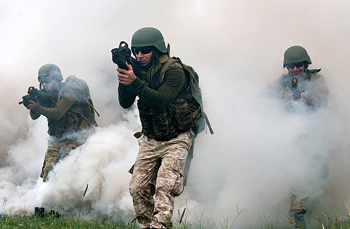
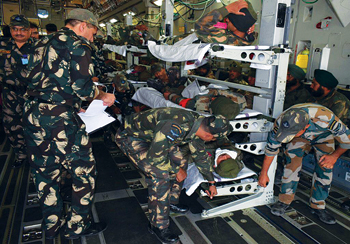
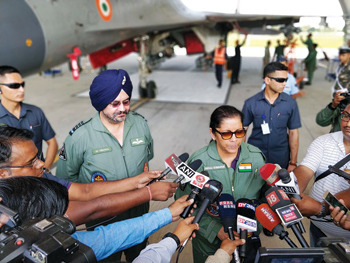
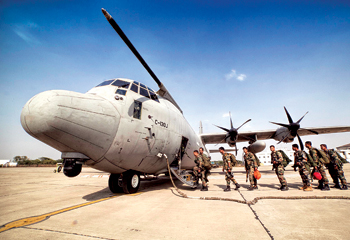
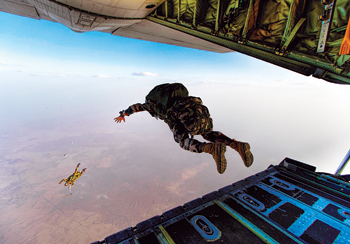
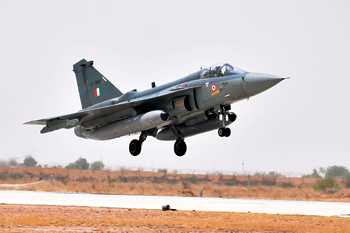
Looks like the South Asian neighbours—India, Pakistan and China are taking this adage pretty seriously. After sporadic reports of Chinese ‘annual exercises’ in South China Sea threw everyone in a tizzy, the Indian Air Force’s power and might were on display during Gagan Shakti 2018. Preparedness was the aim of the exercise rather than intimidating the hostile neighbours, as Air Chief Marshal B.S. Dhanoa reportedly said, “The aim of the exercise is to validate our operational capabilities and concepts in a realistic war-like scenario as well as check our ability to sustain high-tempo operations. It’s not aimed at any country.”
Touted as the biggest ever war combat game exercise on Pakistan and China borders, the exercise kicked off on April 8 and culminated on April 22 with the IAF involving almost all of its assets for the event. Minister of Defence Nirmala Sitharaman even took to her Twitter handle to share a video of the exercise appreciating the plan by tweeting- ‘The scale and scope of #GaganShakti2018 is enormous & like never-before. Given here are only glimpses. Kudos to @IAF_MCC, CAS Air Chief Marshal BS Dhanoa and to all’.
Over 1,100 aircraft were deployed at their operational locations and more than 11,000 sorties were flown, which include approx 9,000 sorties by fighter aircraft. These included close to 550 fighters like the Su-30MKIs, S-30s, MiG-29s, MiG-21s, MiG-27s, Jaguars, Mirage 2000 Hawks, transport aircraft such as the C-17 Globemaster, C-130 Hercules, as well as the IAF workhorse, An-32. For the first time, the indigenous Tejas Mark 1 was included in the biennial excercise. The Tejas has already been inducted into the ‘Flying Daggers’ 45 Air Force squadron but is undergoing constant improvements with the Air Force eagerly waiting for the improved version, Tejas Mark 1A and Tejas Mark II. Not only that, this is the first time an exercise of this magnitude has been done since Operation Brasstacks in November 1986 and Operation Parakram in December 2001. For skeptics, who aren’t able to digest the mammoth scale of the operations, former Air Chief Marshal Arup Raha clarifies, “It includes all types of aircraft, fighters, transport aircraft, helicopters, UAVs, force multipliers, etc. High serviceability and rate of sortie generation have helped in achieving such flying effort. Almost all Indian Air Force level exercise have used maximum assets in the past.”
OF BATTALION DROPS AND EVACUATIONS
As part of the recently concluded exercise, a Mass Casualty Air Evacuation Drill was also conducted in the Northern sector in which 88 ‘casualties’ were airlifted from Leh and taken to Chandigarh by C-17 Globemaster aircraft. The aircraft was converted for this role by fixing support structures for the stretchers, in the main cabin. An indigenously developed Patient Transfer Unit (PTU) capable of providing In-Flight Critical Care to patients was also demonstrated during the exercise. After landing in Chandigarh, these ‘patients’ were evacuated to Command Hospital, Chandimandir. For swift transfer of the patients in ambulances to the Hospital, a green corridor was made in liaison with Chandigarh civil authorities. The IAF sought to prove their quick response in carrying out mass casualty evacuations through this demonstration. This capability will also be utilised by the IAF in disaster relief operations near the incident locations by even landing on the designated highways.
During Exercise Gagan Shakti 2018, the IAF also formalised the concept of a Forward Surgical Centre (FSC) with the aim of enhancing the medical capabilities at a forward base which is located away from a service hospital. The establishment of FSC as a forward base enables immediate life and limb saving surgery and stabilization of the patient. Evacuation rear-ward to a higher surgical centre could then be undertaken at an opportune time during operations. The availability of FSCs at remote forward bases would be a major boost to the morale of not only the air warriors but also for army soldiers.
So far, the first FSC has been operationalised in Naliya, Gujrat and two more are expected to come up in Phalodi, Rajasthan and Sirsa, Haryana. Air Chief Marshal Dhanoa also visited the FSC at Naliya and was quite impressed with the dedicated surgical team, equipped to undertake six to eight surgeries a day. There was a mass casualty air evacuation drill on Day 8 of the exercise by the Eastern Air Command (EAC) from Air Force Station Chabua in Assam to Netaji Subhash International Airport, Kolkata and further on to Command Hospital (Eastern Command), Alipore by road. Two An-32 aircrafts aided the drill that took place in the middle of the night.
BEST OF ALL THREE FORCES
More than 300 officers and 15,000 air warriors participated in the exercise, so it comes as no surprise that from a total of 11,000 sorties, over 5,000 sorties were conducted in just 3 days. Defence Secretary Sanjay Mitra and the Vice Chief of Air Staff Air Marshal S.B. Deo also flew a sortie each in Su-30 MKI squadron based at Sirsa. The mission was flown in a dense network centric environment as part of the exercise.
In an all-inclusive move, the IAF also conducted maritime air operations on the Western seaboard, aiming at air dominance and deep strike validation over the extended area of interest in the Indian Ocean region (IOR). In the long range strike concept validation, the Su-30s, airborne from a base on the eastern coast engaged multiple targets, in the western seaboard, at distances beyond 2,500 km, and landed at a southern base, thus covering a total distance of 4,000 km, in a single mission. The enormous ranges were aided by the use of Il-78 flight refuelling aircraft for long range strike capabilities as well as the Indian Navy P-8I aircraft and airborne warning and control systems (AWACS).
Gagan Shakti also gave an opportunity to evaluate joint operations with the Indian Navy for testing enablers such as AWACS and FRAs in the Op matrix and in conjunction with Su-30 and Jaguar aircraft. The exploitation of the combat support assets helps to extend the reach in the entire IOR. Joint operations with Army and Navy would help in achieving better operational synergy between the three services, in application of combat power.
The good ol’ Sukhoi jets also made an appearance on the ninth day of the exercise in a massive bombing exercise on the Assam-Arunachal Pradesh border. Defence Minister Nirmala Sitharaman and Air Chief Marshall B.S. Dhanoa witnessed this operation. “The exercise has shown that the IAF can reach the north-east from any part of the country within two hours, fully prepared. Heavy vehicles landed in front of me at the Advanced Landing Ground (ALG) at Pasighat (in Arunachal Pradesh). Thus, we have achieved our access to the remotest part of the country,” said Sitharaman.
Earlier, the Defence Minister flew on a Mi-17 chopper to go to Pasighat ALG from the IAF base at Chabua in Assam. At Pasighat, she witnessed the take-off of two Su-30 jets and the landing of a C-130 aircraft, from which Garud Commandos simulated taking over the base. Sitharaman, who also witnessed the bombing drill, was briefed on the uploading of rockets on a Mi helicopter gunship.
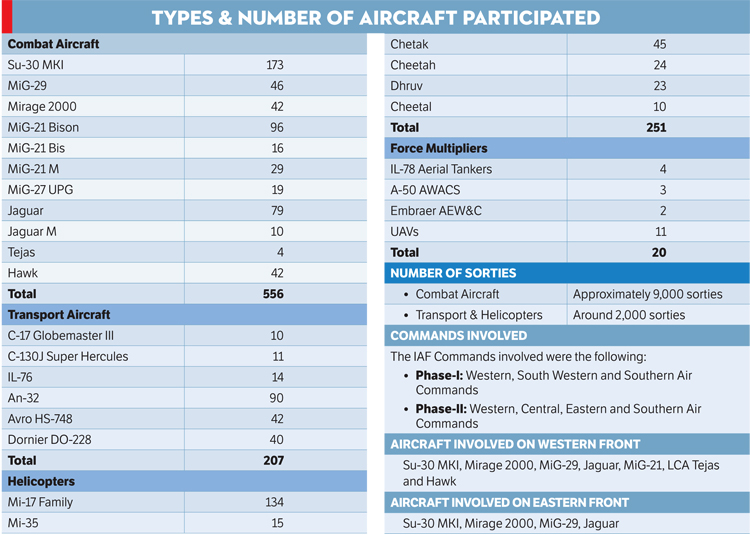
Meanwhile, a major joint operation, Inter Valley Troop Transfer (IVTT), was conducted in the Northern and North-Eastern Sector to reposition troops from one valley to another, to counter any evolving threat and to surprise or offensively exploit the weakness of the adversary. The operations used C-130 and An-32 tactical transport aircraft and Mi-17 V5/ALH helicopters, also validating the versatile manoeuvering capabilities of these platforms in an extremely demanding high altitude terrain.
‘The aim of the exercise is to validate our operational capabilities and concepts in a realistic war-like scenario as well as check our ability to sustain hightempo operations. It’s not aimed at any country,’ says Air Chief Marshal B.S. Dhanoa
The IAF and Indian Army Parachute Brigade’s battalion-level airborne assault on Day 3 was indeed hair-raising. The mission included paradrop of 560 paratroopers, combat vehicles and GPS guided cargo platforms. The landing force was dropped behind the simulated enemy lines to soften up the likely resistance to our own armoured offensive. The airborne force comprised six C-130J and seven An-32 aircraft launched from multiple IAF bases. The force was provided aerial surveillance by AWACS and protected by a flight of Su-30 air superiority fighters.
A GRAND FINALE
merge the wartime drills with various Humanitarian Assistance and Disaster Relief (HADR) drills. In a Tweet to signify the start of the activities, the official page of Indian Air Force stated that the ‘Aim of the Exercise is real time coordination, deployment and employment of Air Power in a short and intense battle scenario. IAF will exercise the entire machinery to validate its concept of operations and war waging capability. Air Chief Marshall Dhanoa also agreed that the mega exercise ‘achieved more than its stated objectives’. IAF was able to achieve 80 per cent serviceability of aircraft while radars and surface to air guided weapons maintained a serviceability of 97 per cent, which included some of the legacy systems that were over 40 years old. Focused effort enabled a dispatch rate of more than 95 per cent for the Combat Assets, 100 per cent availability of Combat Support Systems and almost 100 per cent dispatch rates of Combat Enablers. Well then, ‘May God have mercy on our enemies, because we won’t.’





